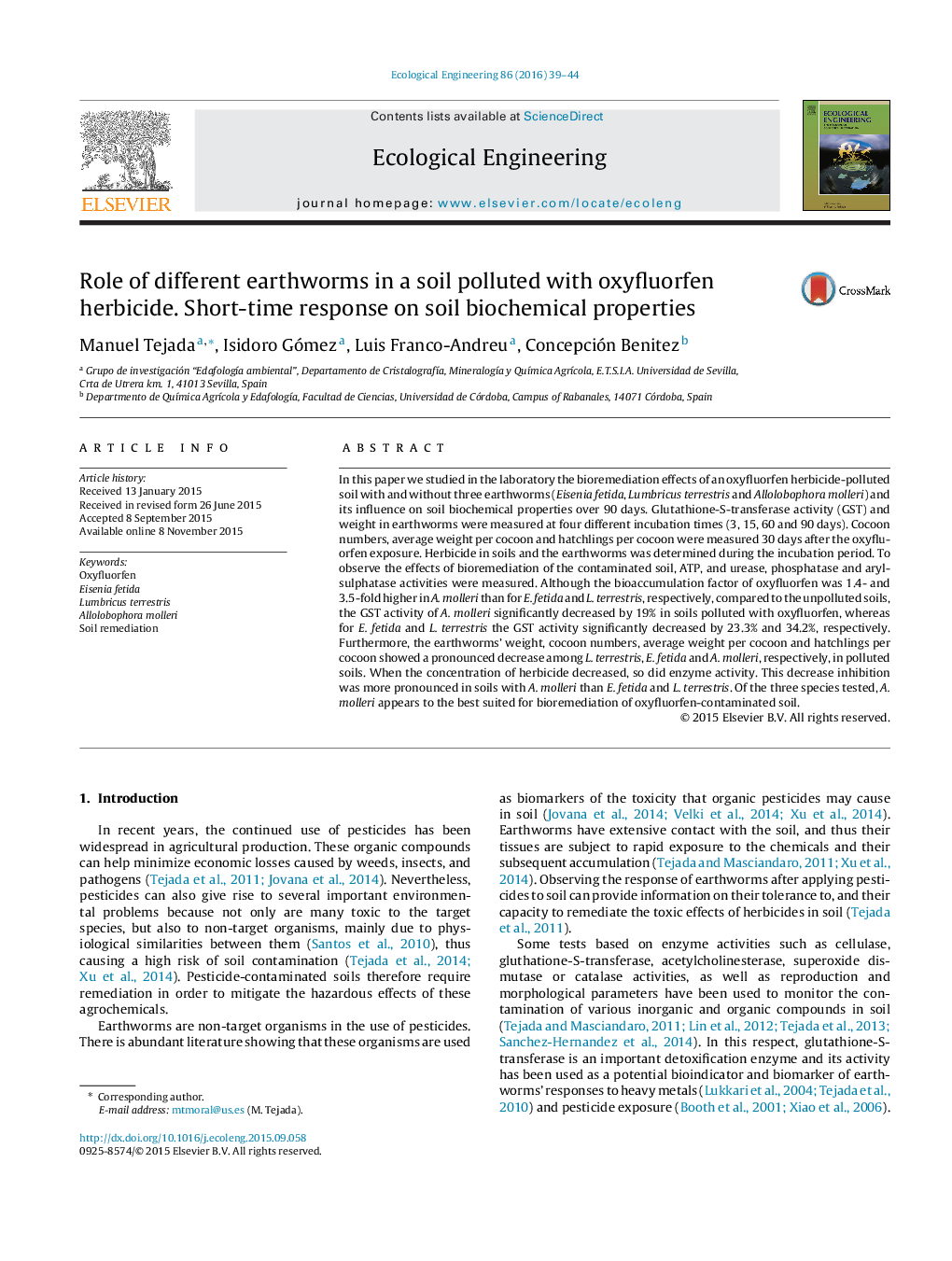| Article ID | Journal | Published Year | Pages | File Type |
|---|---|---|---|---|
| 4388912 | Ecological Engineering | 2016 | 6 Pages |
•Oxyfluorfen has an adverse effect on earthworms and soil biochemical properties.•The toxic effect of oxyfluorfen on A. molleri was lowest compared to E. fetida and L. terrestris.•The bioaccumulation of oxyfluorfen was higher in A. molleri than E. fetida and L. terrestri.•By decreasing the concentration of herbicide in soil, the inhibition of biochemical properties decreased.•A. molleri was the best suited for bioremediation of soil contaminated with oxyfluorfen.
In this paper we studied in the laboratory the bioremediation effects of an oxyfluorfen herbicide-polluted soil with and without three earthworms (Eisenia fetida, Lumbricus terrestris and Allolobophora molleri) and its influence on soil biochemical properties over 90 days. Glutathione-S-transferase activity (GST) and weight in earthworms were measured at four different incubation times (3, 15, 60 and 90 days). Cocoon numbers, average weight per cocoon and hatchlings per cocoon were measured 30 days after the oxyfluorfen exposure. Herbicide in soils and the earthworms was determined during the incubation period. To observe the effects of bioremediation of the contaminated soil, ATP, and urease, phosphatase and arylsulphatase activities were measured. Although the bioaccumulation factor of oxyfluorfen was 1.4- and 3.5-fold higher in A. molleri than for E. fetida and L. terrestris, respectively, compared to the unpolluted soils, the GST activity of A. molleri significantly decreased by 19% in soils polluted with oxyfluorfen, whereas for E. fetida and L. terrestris the GST activity significantly decreased by 23.3% and 34.2%, respectively. Furthermore, the earthworms’ weight, cocoon numbers, average weight per cocoon and hatchlings per cocoon showed a pronounced decrease among L. terrestris, E. fetida and A. molleri, respectively, in polluted soils. When the concentration of herbicide decreased, so did enzyme activity. This decrease inhibition was more pronounced in soils with A. molleri than E. fetida and L. terrestris. Of the three species tested, A. molleri appears to the best suited for bioremediation of oxyfluorfen-contaminated soil.
